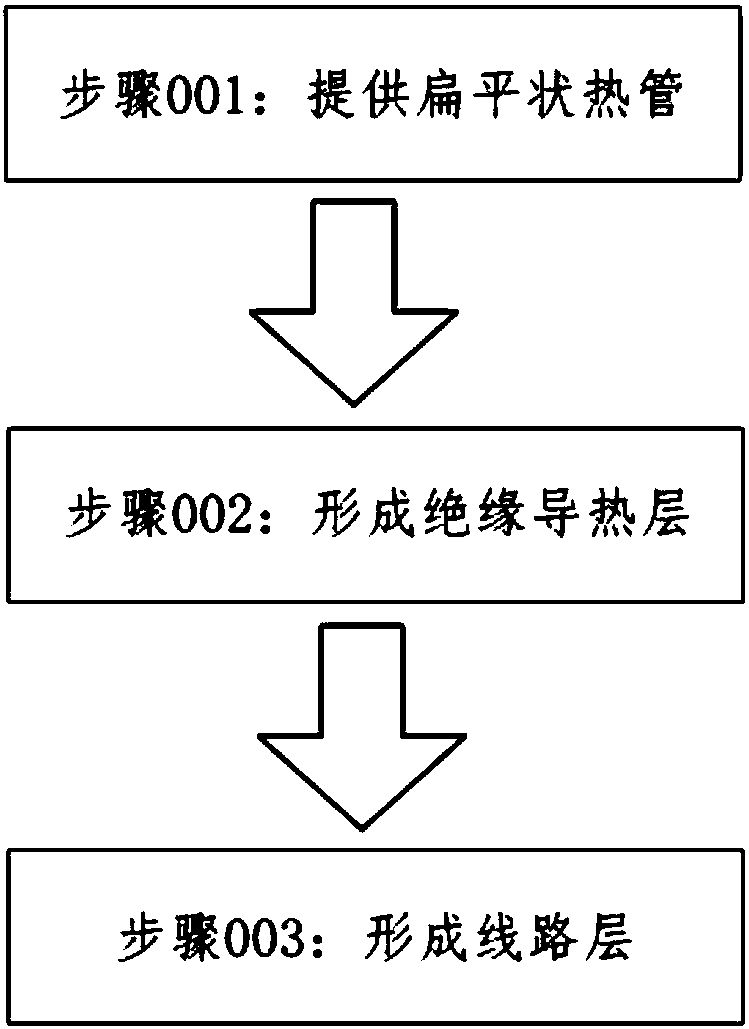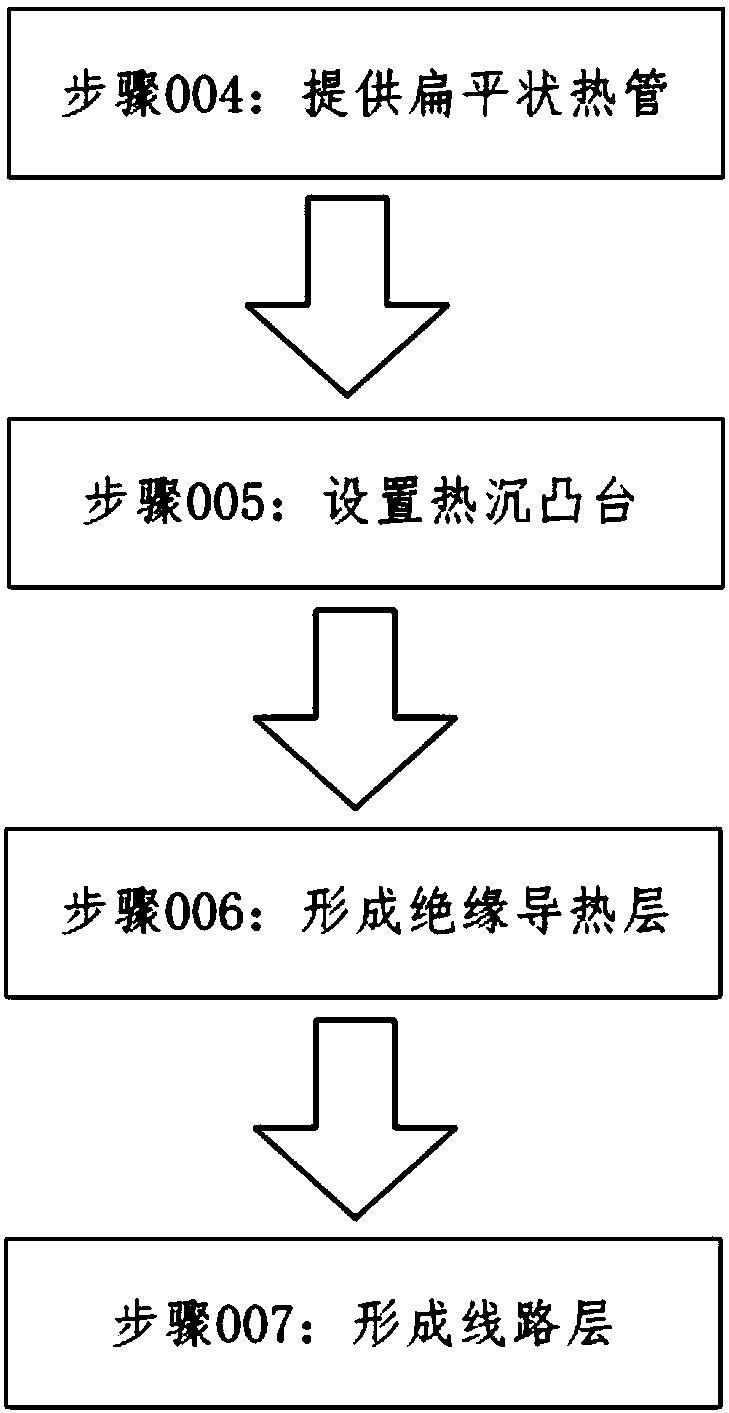Low-thermal-resistance substrate preparation process
A technology of substrate preparation and low thermal resistance, applied in printed circuit parts, chemical/electrolytic removal of conductive materials, formation of conductive patterns, etc., can solve the problem of poor thermal conductivity, insufficient thermal conductivity of copper plates, and unsatisfactory LED junction temperature. Reliability requirements and other issues, to achieve the effect of low thickness, reduced thermal resistance, and thin overall thickness
- Summary
- Abstract
- Description
- Claims
- Application Information
AI Technical Summary
Problems solved by technology
Method used
Image
Examples
Embodiment 1
[0053] Provided is a flat heat pipe. The surface of the heat pipe is coated with epoxy resin, and an insulating heat conduction layer is formed on the surface of the heat pipe after the epoxy resin is cured.
[0054] Use conductive silver paste as the material of the circuit layer.
[0055] The circuit pattern is screen-printed on the surface of the insulating and heat-conducting layer by screen printing. In the screen printing, a 70-degree polyester screen is used to bake the conductive silver paste printed on the surface of the insulating and heat-conducting layer under infrared rays. The baking temperature is temperature at 150°C until the conductive silver paste solidifies and a circuit layer is formed on the surface of the insulating and heat-conducting layer.
[0056] Through the above steps, the low thermal resistance substrate of the present invention is obtained.
[0057] The low thermal resistance substrate manufactured by the low thermal resistance substrate prepar...
Embodiment 2
[0059] A flat heat pipe is provided. Polyimide resin is coated on the surface of the heat pipe, and the polyimide resin is cured to form an insulating heat conducting layer on the surface of the heat pipe.
[0060] Use conductive silver paste as the material of the circuit layer.
[0061] The circuit pattern is screen-printed on the surface of the insulating and heat-conducting layer by screen printing. In the screen printing, a 70-degree polyester screen is used to bake the conductive silver paste printed on the surface of the insulating and heat-conducting layer under infrared rays. The baking temperature is temperature at 150°C until the conductive silver paste solidifies and a circuit layer is formed on the surface of the insulating and heat-conducting layer.
[0062] Through the above steps, the low thermal resistance substrate of the present invention is obtained.
[0063] The low thermal resistance substrate manufactured by the low thermal resistance substrate preparat...
Embodiment 3
[0065] Provided is a flat heat pipe. The surface of the heat pipe is coated with epoxy resin, and an insulating heat conduction layer is formed on the surface of the heat pipe after the epoxy resin is cured.
[0066] Copper foil is used as the material of the wiring layer.
[0067] Copper foil is pressed on the surface of the insulating and heat-conducting layer, a preset circuit pattern is drawn on the surface of the copper foil, a tin resist is plated on the copper foil according to the preset circuit pattern, and ammonia water / sulfuric acid is used according to the preset circuit pattern The ammonium etchant etches the copper foil to form a circuit layer.
[0068] Through the above steps, the low thermal resistance substrate of the present invention is obtained.
[0069] The low thermal resistance substrate manufactured by the low thermal resistance substrate preparation process in this embodiment has low overall thermal resistance and good heat dissipation effect, and the...
PUM
| Property | Measurement | Unit |
|---|---|---|
| Thickness | aaaaa | aaaaa |
Abstract
Description
Claims
Application Information
 Login to View More
Login to View More - R&D
- Intellectual Property
- Life Sciences
- Materials
- Tech Scout
- Unparalleled Data Quality
- Higher Quality Content
- 60% Fewer Hallucinations
Browse by: Latest US Patents, China's latest patents, Technical Efficacy Thesaurus, Application Domain, Technology Topic, Popular Technical Reports.
© 2025 PatSnap. All rights reserved.Legal|Privacy policy|Modern Slavery Act Transparency Statement|Sitemap|About US| Contact US: help@patsnap.com



